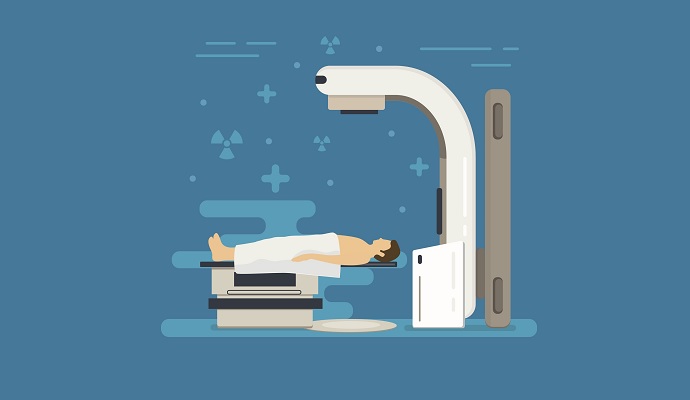Despite Financial Incentives, Medical Imaging Rates Reaccelerating
Medical imaging rates rose 1-5% annually for most age groups and most tests despite financial incentives and campaigns discouraging use, a study finds.

Source: Getty Images
- Reducing reimbursement rates and implementing broad campaigns among physician groups has done little to decelerate medical imaging rates, suggested a study recently published in the Journal of the American Medical Association.
The rates of use of CT, MRI, and other scans have continued to increase in both the US and Ontario, Canada, according to the study of more than 135 million imaging exams conducted by researchers at UC Davis, UC San Francisco, and Kaiser Permanente.
Medical imaging rates for most tests and most age groups slowed in the early 2000s before experiencing an uptick in recent years for CT and MRI in most patient age groups, researchers reported. Specifically, utilization rates grew between one and five percent for most tests and most age groups between 2012 and 2016.
The only exception was CT use in children, which decreased in the US from 2009 to 2013 and remained stable.
“Medical imaging is an important part of health care and contributes to accurate disease diagnosis and treatment, but it also can lead to patient harms such as incidental findings, overdiagnosis, anxiety and radiation exposure that is associated with an increased risk of cancer,” stated lead author Rebecca Smith-Bindman, MD, a UCSF professor of radiology, epidemiology and biostatistics, and obstetrics and reproductive medicine.
READ MORE: Order History, Machine Ownership Leads to Low-Value Imaging
The findings also raise concerns about potential overuse, researchers said.
Healthcare spending is rising at an unsustainable rate. With expenditures on track to account for over 19 percent of gross domestic product (GDP) by 2027 according to federal actuaries, policymakers and industry leaders are implementing efforts to prevent excessive spending, including reducing the use of low-value or unnecessary care.
Medical imaging is critical to accurately diagnosing patients and improving treatment, but the industry estimates that 30 percent or more of imaging examinations may be unnecessary, costing the US about $30 billion annually.
CMS and other payers have worked to decrease the use of unnecessary imaging services by reducing reimbursement rates for the tests, researchers found. The payers intend for the lower rates to discourage providers from performing the tests.
The Choosing Wisely campaign has also addressed potential overuse of medical imaging services on a national scale. Launch in 2012 by the American Board of Internal Medicine Foundation and endorsed by 85 professional medical societies, the campaign encourages physicians to discuss the necessity of imaging tests and other services.
READ MORE: 3 Strategies to Decrease Low-Value Care, Healthcare Costs
Evidence has shown the efforts to work, with several studies revealing reduced imaging rates among Medicare beneficiaries and some uncovering significant cost savings stemming from lower medical imaging rates.
However, the researchers from UC Davis, UC San Francisco, and Kaiser Permanente found that the financial incentives and broad campaigns are not having a lasting impact on medical imaging rates.
“Although most physicians are aware that imaging tests are frequently overused, there are not enough evidenced-based guidelines that rely on a careful consideration of the evidence, including information on benefits and harms that can inform their testing decisions,” Smith-Bindman said. “In the absence of balanced evidence, the default decision is to image.”
The Choosing Wisely campaign has specifically been slow to produce results, according to a 2017 Health Affairs study. In that study, researchers from the Center for Clinical Management Research at the Veterans Affairs (VA) Ann Arbor Health System found modest decreases in the utilization of just two of seven low-value services listed by the Choosing Wisely campaign. Utilization increased for another two of the seven low-value services during the period.
Results from financial incentives and broad campaigns may be slow moving, but that shouldn’t be a reason to pause efforts, industry experts say.
READ MORE: Reducing Low-Value Care Key to Value-Based Reimbursement Success
“While research has shown that practice changes take time, our article also highlighted the way that Choosing Wisely has transformed the conversation about unneeded healthcare services in just five years,” said Eve A. Kerr, MD, MPH, Director of the VA Center for Clinical Management Research, VA Ann Arbor Healthcare System. “Behavioral change is challenging in any profession. And yet, what began as an idea five years ago now is an accepted fact by physician leaders: too much medical care is being provided that is not warranted and may, indeed, be harmful.”
There are also hopeful signs in the most recent Health Affairs study on medical imaging, said Diana Miglioretti, PhD, biostatistics professor at UC Davis Department of Public Health Sciences and senior author on the study.
“The good news is that rates of CT imaging are starting to come down in children," said Miglioretti, who is also a senior investigator with Kaiser Permanente Washington Health Research Institute. "However, they're still far lower in Ontario than in the US, suggesting there is additional room for improvement. It's also important to reduce unnecessary imaging in adults given they are also at risk of radiation-induced cancers."
